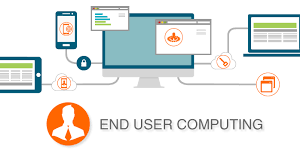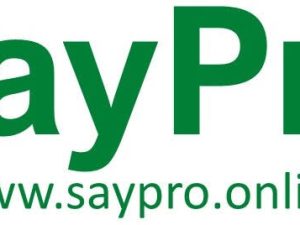SayPro 91761 Occupational Certificate: Electrician Training Course
- Description
- Curriculum
- Reviews
1. Knowledge Modules (Theoretical Component)
KM01: Introduction to Electrical Principles
-
Basic concepts: Voltage, current, resistance, and power
-
Ohm’s Law and applications
-
AC vs DC theory
-
Electrical energy and efficiency
KM02: Electrical Drawings and Documentation
-
Electrical symbols, schematics, and diagrams
-
Reading and interpreting electrical plans
-
Producing basic wiring diagrams
KM03: Electrical Installation Theory
-
Wiring systems (domestic, commercial, industrial)
-
Cable types, selection, and sizing
-
Installation methods: surface, conduit, and trunking systems
-
Earthing, bonding, and lightning protection
KM04: Electrical Safety and Legal Compliance
-
Occupational Health and Safety Act (OHS Act)
-
Safe work practices and risk assessments
-
Electrical regulations (SANS standards)
-
Lockout-Tagout (LOTO) procedures
KM05: Electrical Equipment and Components
-
Transformers, motors, and generators
-
Switchgear, circuit breakers, and protection devices
-
Control circuits and contactors
-
Testing instruments and tools
KM06: Energy Efficiency and Emerging Technologies
-
Energy-saving technologies and techniques
-
Introduction to renewable energy (solar, wind)
-
Smart home and industrial automation basics
KM07: Fault Finding and System Diagnosis
-
Principles of troubleshooting
-
Common faults in wiring and equipment
-
Systematic approach to repairs
2. Practical Skills Modules (Skills Development Component)
PSM01: Workshop Practice and Basic Skills
-
Correct use of hand tools and power tools
-
Measuring, cutting, and joining cables
-
Drilling, mounting, and securing installations
PSM02: Domestic Electrical Installations
-
Installations of lighting circuits, sockets, and distribution boards
-
Circuit testing and certification
-
Earthing and protection installations
PSM03: Commercial and Industrial Installations
-
Three-phase wiring and installations
-
Motor control centers (MCCs)
-
Industrial lighting and power systems
-
Installation of backup systems (generators, UPS)
PSM04: Testing, Commissioning, and Maintenance
-
Use of multimeters, insulation testers, and earth testers
-
Performing earth continuity and loop impedance testing
-
Commissioning reports and customer handovers
PSM05: Fault Finding Practical
-
Simulated fault scenarios
-
Diagnostic skills development
-
Repair and reporting procedures
3. Workplace Modules (Workplace Learning Component)
WM01: Workplace Induction
-
Health and safety induction
-
Introduction to site policies and procedures
WM02: Installation Projects
-
Real-world participation in new electrical installations
-
Recording project tasks and hours in a logbook
WM03: Maintenance and Repairs
-
Assisting with maintenance activities
-
Diagnosing and repairing real faults under supervision
WM04: Final Assessment Preparation
-
Portfolio of Evidence (PoE) compilation
-
Mock practical assessments
-
Workplace mentorship and coaching sessions
4. Assessments
-
Formative Assessments (throughout the course)
-
Knowledge quizzes
-
Practical assignments
-
Simulated projects
-
-
Summative Assessments
-
Written exams per knowledge module
-
Practical skill demonstrations
-
-
External Integrated Summative Assessment (EISA)
-
Conducted by a QCTO-accredited Assessment Centre
-
Includes theory and practical evaluation
-
5. Duration Breakdown (Suggested Timeline)
| Year | Focus Area |
|---|---|
| Year 1 | Foundation Theory + Basic Practical Skills |
| Year 2 | Advanced Theory + Commercial and Industrial Installations + Workplace Placement Start |
| Year 3 | Specialized Installations + Full Workplace Experience + Final Preparation for EISA |
Additional Curriculum Features
-
Workplace Logbook: Track all site-based tasks and practical experiences.
-
Project Assignments: Simulated projects like wiring a residential building or setting up a small commercial workshop.
-
Soft Skills Training:
-
Communication with clients and team members
-
Problem-solving and decision-making
-
Time management and work ethics
-
-
Technology Integration:
-
Introduction to IoT (Internet of Things) and Smart Electrical Installations
-
Basics of Solar PV Installation (optional module)
-
Recent Posts
- SayPro Reporting: Generate a report that summarizes the key insights from the feedback. Focus on identifying patterns, areas for improvement, and actionable suggestions.
- SayPro Feedback Data Analysis: Organize and analyze the collected feedback. Look for trends in attendee satisfaction, speaker performance, and logistical issues.
- SayPro Distribute Feedback Surveys: Ensure the surveys are sent to all participants and internal employees after the January event.
- SayPro Team Collaboration Feedback Employees will also submit feedback on the team dynamics, communication effectiveness, and any lessons learned during the preparation and execution of the event.
- SayPro Operational Report: This will include a detailed report on the planning and execution stages, including any logistical issues faced and how they were resolved.



